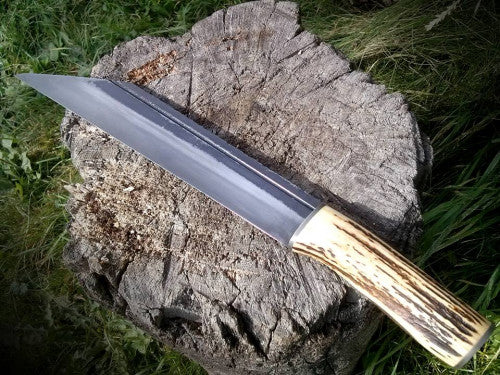Deeply rooted in Scandinavian history, the seax, aka “scramasax” or “sax,” was the blade shape of choice for a Viking.
Typically the Norsemen were associated with their famous axes but, truth be known, they also carried a knife that saw more general use.
Here’s a rundown of those knives, as well as some modern reinterpretations of the design.

An inseparable item from a Viking
The Scandinavians usually lived in villages, farmed the land and raised animals. In such an agrarian society, they also needed tools to help them work the land and harvest the fruits of their labor. This is also where the knife came into play.
The seax knife was tasked with a myriad of chores, from skinning a freshly taken deer to cutting up the turnips they grubbed out of the ground, a true all-purpose tool.

The seax also could be employed as a self-defense weapon if needed. It was truly a blade for all seasons: Harvest produce in the morning, fend off the enemy after lunch, and then prepare supper in the evening—all with the same blade!
Seax Designs
The seax needed to be an all-round utility tool that could chop, cut, slice and sometimes stab, all with equal ease of application, as the Viking’s livelihood depended on self-sufficiency, resourcefulness and the quality of his toolkit.

Blade lengths varied wildly from 7 inches on the short end and topping out at 30 inches, the latter being in all but name a true short sword.

Looks Aren’t Everything
At first glance the seax may not seem as exciting as a recurve blade, but looks are not always everything. The beauty of such a blade lies within its ability to tackle cutting chores.
The straight-line cutting edge tackles a variety of tasks easily, and the point of the blade is both precise and powerful, with the ability to score as well as penetrate.
A true jack-of-all-trades and an unspoken hero in the Viking arsenal.













Comment (1)
The Seax was a well used knife by the Anglo Saxons in England